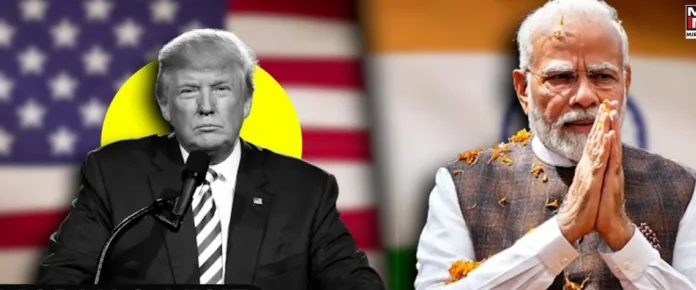During a 72-hour visit, PM Modi engages with President Biden and other leaders, steering clear of the 2024 presidential candidates.
Prime Minister Narendra Modi concluded his 72-hour visit to the United States on September 24, 2024, returning to India without engaging with any of the 2024 presidential candidates, notably Donald Trump and Kamala Harris. Modi’s visit was marked by a packed agenda that included bilateral talks with President Joe Biden, participation in a Quad summit, and an address at the UN Summit of the Future, alongside meetings with top CEOs.
Despite speculation around a potential meeting with Trump, who had suggested that Modi was coming to the U.S. to meet him, the Indian Prime Minister chose not to engage in American domestic politics. Trump’s remarks ahead of Modi’s visit hinted at an expectation of interaction, creating a buzz among supporters. However, Modi’s busy schedule, which left little room for additional meetings, effectively sidelined Trump’s aspirations for a rendezvous.
Historically, Modi and Trump have shared a mutual admiration, with Modi previously inviting Trump to major events, such as the “Howdy Modi” rally in Houston in 2019. This past interaction led to a significant turnout and bolstered Trump’s image among his followers. Nonetheless, after facing criticism for perceived endorsements during the last U.S. elections, Modi’s team opted for discretion this time around, leading to a decision against meeting either candidate.
Trump’s propensity for misinterpreting diplomatic exchanges has been noted in the past, raising concerns in New Delhi about potential miscommunications. Modi’s previous invitation to Trump in 2019, followed by Trump’s claims about mediation in Kashmir, prompted a public refutation from India, highlighting the need for careful handling of interactions with U.S. leaders.
As Modi departed, Trump was addressing a rally in Pennsylvania, while Harris was busy with her own campaign schedule in Washington, D.C. This timing underscored the busy political landscape as both candidates focused on critical battleground states leading into the upcoming election.
Polling indicates that the Indian-American community, traditionally aligned with the Democratic Party, is increasingly showing interest in the Republican Party, reflecting a shift in political sentiment. Trump’s vocal support from pro-Modi constituencies complicates the narrative, suggesting that Modi’s team is navigating a complex political landscape as the 2024 elections approach.
While Modi’s avoidance of direct engagement with Trump and Harris may have disappointed some, it aligns with a broader strategy to maintain diplomatic neutrality amid the heated U.S. political climate. The Indian Prime Minister’s commitment to strengthening bilateral relations with the U.S. continues, even as he prioritizes India’s interests over domestic American political affairs.
Analysis:
Political:
PM Modi’s decision to avoid interactions with Trump and Harris reflects a calculated approach to U.S. politics, ensuring that India remains above the partisan fray. By not engaging with candidates, Modi seeks to preserve India’s diplomatic standing and focus on substantive discussions with established leaders like Biden. This choice may help mitigate any potential backlash from the Democratic Party, especially given past criticisms regarding Modi’s perceived favouritism towards Trump.
Social:
The dynamics between Modi and the U.S. political landscape highlight the evolving relationship between Indian and American political factions. As Indian Americans reassess their political allegiances, Modi’s measured response may appeal to a broader audience, fostering goodwill among diverse voter groups in the U.S. Maintaining a neutral stance could position India as a valued partner, regardless of who wins the presidency.
Racial:
The Indian diaspora’s political shift has implications for how racial and ethnic identities intersect with American politics. As Indian-Americans increasingly embrace the Republican Party, leaders like Modi must navigate these changing tides while representing the interests of their constituents. Modi’s diplomatic approach may resonate with voters who seek stability in international relations.
Gender:
The absence of direct engagement with Kamala Harris, a woman of Indian descent and current Vice President, raises questions about gender dynamics in international diplomacy. While Modi has interacted with prominent female leaders in the past, the decision to sidestep interactions during this visit may reflect broader strategic considerations, emphasizing political neutrality over personal connections.
Economic:
Modi’s focus on strengthening economic ties with the U.S. amidst election campaigns indicates a prioritization of India’s economic interests over electoral manoeuvring. By maintaining engagements with business leaders and the Biden administration, Modi aims to bolster trade relationships and secure investments that could benefit India’s economic landscape.
In summary, PM Modi’s recent U.S. visit illustrates the complexities of navigating international diplomacy in the context of domestic politics. His avoidance of presidential candidates signifies a strategic choice to uphold India’s interests while fostering relations with established U.S. leadership, paving the way for continued collaboration.
